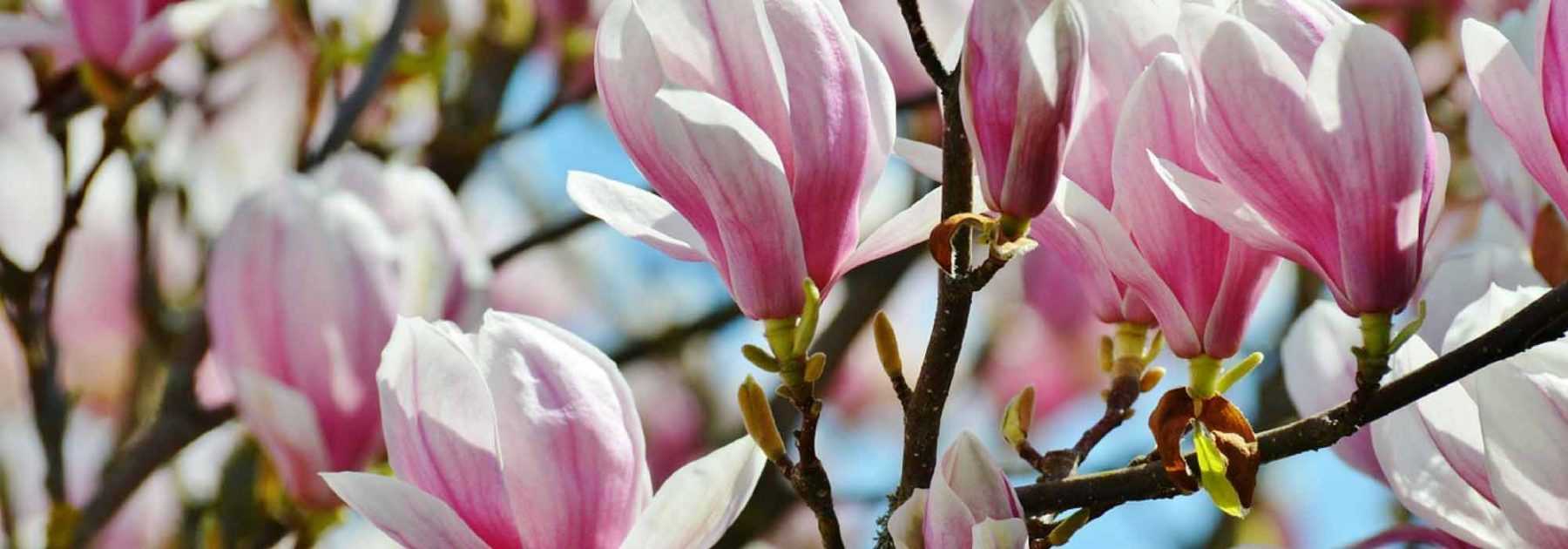
Magnolias: Planting, Pruning and Care
Contents
Magnolias in a Nutshell
- They are the oldest flowering trees
- Deciduous or evergreen, their abundant flowering is unforgettable
- Hardy, they withstand intense cold as well as urban pollution
- They thrive in sun or partial shade in gardens of all sizes
- Slow-growing, they can also be grown in pots
Our expert's word
Magnolias forever! Magnolias are trees with such spectacularly early and abundant flowering that they’ve inspired artists! In spring and summer, their large-petalled, delicately scented flowers open into flaring tulip shapes or stars, ranging from pure white to blush pink and deep purple-black depending on the variety.
There are two main types of magnolias: deciduous magnolias like the Saucer Magnolia or Magnolia soulangeana which flower in early spring and are well-suited to small gardens, and evergreen magnolias like the summer-flowering Magnolia grandiflora.
Whether they’re small shrubs (2.5m to 5m tall) or large trees (10m to 20m tall), their always graceful appearance suits gardens of all sizes, from the smallest to vast parks. Their versatile nature and pollution resistance make them essential for urban gardens.
A springtime staple, they find their place in natural gardens, surrounded by spring bulbs like daffodils and botanical tulips…
Stunning as standalone specimens in a strategic garden spot to showcase their exuberant blooms, in flowering hedges or large beds paired with ericaceous shrubs like Rhododendrons and Camellias. Smaller magnolias like M. stellata can also be grown in containers on patios.
Easy to grow in sun or partial shade, sheltered from cold, dry winds, in fresh, humus-rich soil with neutral to acidic tendencies. They also boast excellent hardiness, making them undemanding regarding climate.
Care, planting and pruning – here are our tips for successful magnolia cultivation of these magnificent flowering trees. From Magnolia grandiflora to deciduous magnolias, discover our splendid magnolia collection at all price points.
Description and botany
Botanical data
- Latin name Magnolia
- Family Magnoliaceae
- Common name Magnolia
- Flowering March to September
- Height 2 to 25 m
- Exposure Sun, partial shade
- Soil type Neutral, acidic, well-drained
- Hardiness -15°C to -25°C depending on species
The magnolia genus comprises around 125 species of deciduous or evergreen trees and shrubs, growing naturally in forests, thickets and along riverbanks in Asia, and from North America to the tropical regions of Central and South America. Magnolias have adapted well to our gardens and are among the few ornamental shrubs that can tolerate urban air pollution.
The Southern magnolia or Magnolia grandiflora is the most famous and largest of the magnolia family, which divides into two types of magnolias; the deciduous-leaved magnolias from Asia like the Saucer magnolia or Magnolia soulangeana which flower in early spring, before the leaves appear, and the evergreen magnolias from America with summer flowering like the Magnolia grandiflora with its large tulip-shaped flowers.
The size of magnolias varies according to species and varieties. Some have a small growth (M.stellata, M (x) loebeneri) and don’t exceed 3 metres in height, making them perfect for small gardens and container growing. Medium-sized specimens measure between 3 and 5 metres, while large trees like Magnolia grandiflora can reach 30 m tall in their natural habitat.
Their growth rate varies by variety and can be slow, especially in the first years after planting, but this is matched only by their longevity of up to a century. And the older magnolias get, the more abundantly they flower. Growth may slow down to the point of appearing stagnant. The root system is shallow and spreading, except in larger species.
Magnolias form branched trees that are always graceful, with a naturally rounded shape and a more or less spreading, airy habit that can be upright or pyramidal. Often taller than wide, they frequently have a bushy form with beautiful, well-balanced branching from the base. Some grow only on a single trunk.
The magnolia is one of the oldest flowering trees. Whether deciduous or evergreen, all produce in spring or summer a magnificent display of tulip-shaped or star-shaped flowers that cover the entire plant.
Most deciduous species flower early, sometimes just as winter ends, while evergreen varieties flower in summer; the large, solitary ‘goblet’ flowers, resembling tulips, appear from June to September.
Some specimens like the Magnolia grandiflora may take several years to flower, sometimes 5 years or more, while others like the Magnolia x stellata ‘Gold Star’ will flower in the first few years after planting.
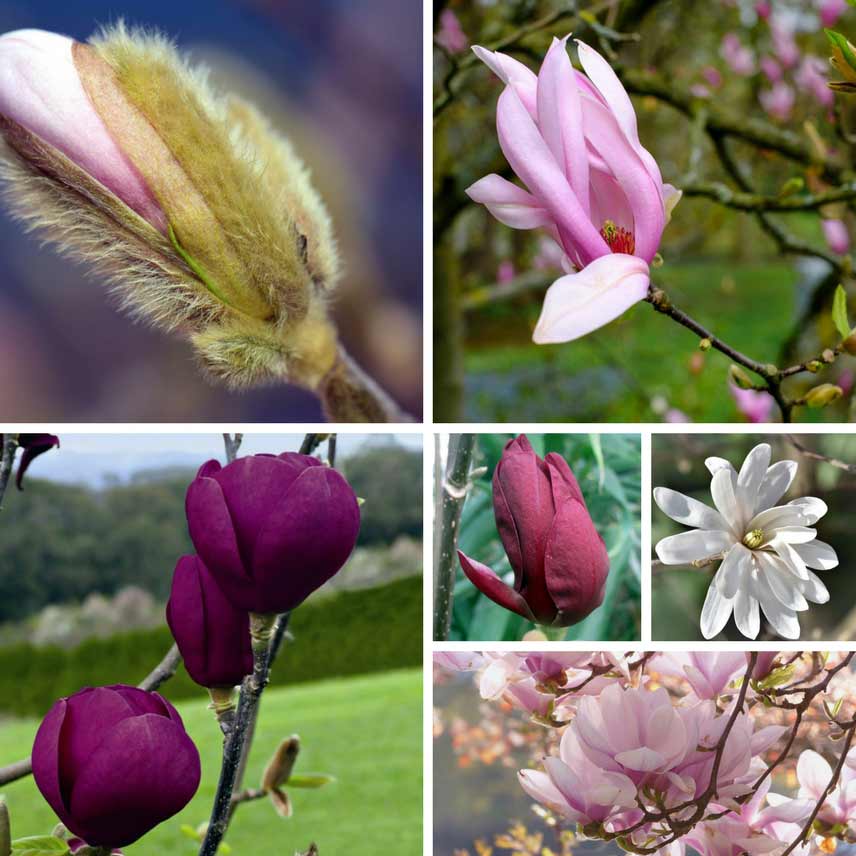

Top: Magnolia soulangeana Bottom, from left to right: Magnolia ‘Black Tulip’ – Magnolia ‘Genie’ -Magnolia stellata- Magnolia ‘Heaven Scent’
Deciduous magnolias, extremely floriferous, like the Magnolia x soulangeana are prized for their early flowering. In spring they offer a breathtaking display that makes us forget the long winter months. Their still-bare dark wood becomes covered as early as March for the earliest varieties, with an abundance of huge flowers that jostle and succeed each other at the branch tips until May. Large velvety brown buds precede the flowering.
Solitary flowers of apparent fragility then bloom, often before the leaves, in shades ranging from pure white, white tinged with pink or purple, to pink, creamy yellow, greenish yellow, wine red and even deep purple verging on black such as ‘Black Tulip’. These tulip or flared cup shapes in pink-flowered magnolias show pretty shades of wine-red or pink mixed with deeper red on the reverse and at the base of the petals. Some open into even more nuanced corollas, as with Magnolia brooklynensis ‘Eva Maria’ or Magnolia soulangeana ‘Rustica Rubra’, giving the flowers remarkable specificity.
Depending on the variety, the flower shape differs; cup-shaped and upright in Magnolia (x) soulangeana or sprengeri, sometimes pendulous in Magnolia wilsonii or horizontal in M. sieboldii, elongated into narrow tulips resembling lilies in Magnolia liliflora or M. ‘Susan’, or star-shaped in M. stellata or star magnolia.
Some flowers may have intermediate forms with more or less flared and curved petals, evoking peonies or even water lilies.
Magnolia flowers were the very first prehistoric flowers to appear 100 million years ago; from an evolutionary standpoint, their spiralled structure, extremely simple and comparable to a screw thread, is one of the most primitive.
The flowers, with corollas measuring from 5 cm to 30 cm in diameter, consist of six to 30 more or less narrow petals, often waxy and thick in texture. At their centre they reveal a bouquet of yellow or pink stamens surrounding a more or less prominent pistil, sometimes with a granular club-like appearance.
Some emit a light citrusy fragrance or more pronounced exotic fruit scent in evergreen magnolias.
The flowers later give way to large cone-shaped fruits containing bright orange-red seeds, very decorative in early autumn.
Magnolias have large leathery leaves that are deciduous or remain evergreen depending on species and sometimes climate. The foliage is quite luxuriant, in shades from light green to quite dark green, glossy or matte, composed of entire alternate leaves, oval or elliptical, 8 to 40 cm long with more or less marked veins. Some turn yellow-brown in autumn before falling. They sometimes have a paler, downy underside and emit a delicate lemony fragrance.
The Magnolia macrophylla and Magnolia tripetala or umbrella magnolia are exceptions; it’s not their flowers but their very large deciduous leaves measuring up to 80 cm in length that attract attention, giving them a particularly interesting exotic appearance.
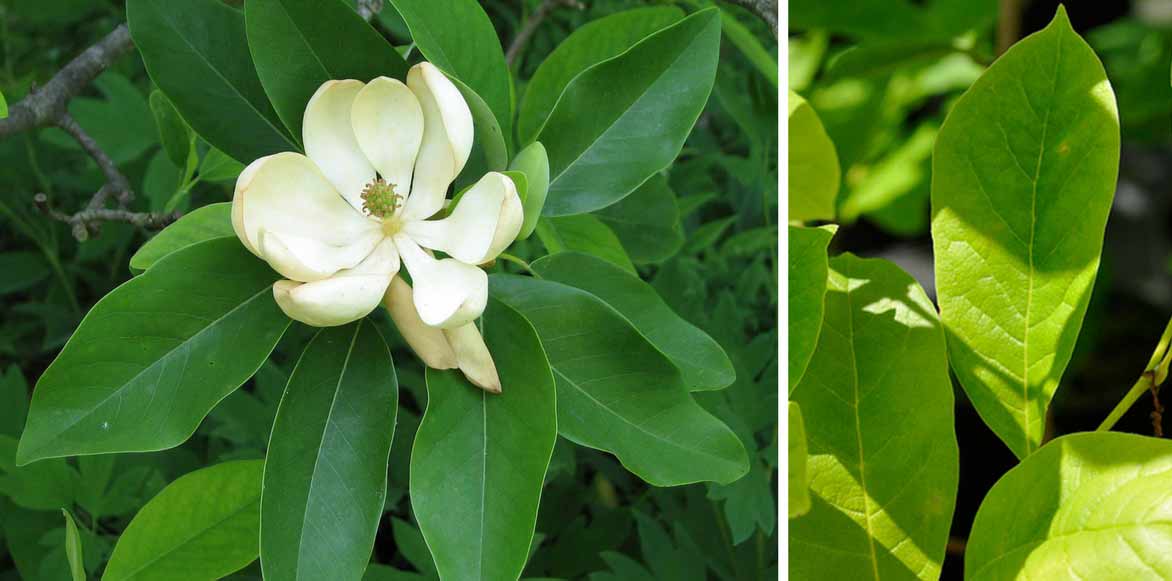

The original foliage, green on top, silvery beneath of Magnolia virginiana Glauca and the leathery leaves of Magnolia stellata
Most magnolias tolerate harsh winters and are hardy from -15°C to -20°C-25°C, depending on the species. Some species are slightly less hardy. They should be sheltered from cold winds and late frosts which can damage their early flowering.
They prefer a sunny to partially shaded position and neutral or acidic soil, rich in humus, well-drained and moisture-retentive during summer heat.
Apart from a few species like the magnolia kobus which tolerate slightly alkaline soil, they prefer soil without excess lime.
Magnolias are splendid as specimen plants, as a focal point in the garden to enjoy their spectacular flowering, in flowering hedges with viburnums or in large beds with flowering quinces and forsythias, alongside ericaceous shrubs like Rhododendrons and Camellias or perennials like clematis or foxgloves. Their compact size and slow growth suit gardens of all sizes, even small ones, and some can also be grown against a wall. Magnolias can also be grown in pots on a terrace.
They are also often used in Japanese gardens in combination with Japanese maples, azaleas and Nandina.
In spring, surround them with a carpet of early flowers and bulbs like lungworts, daffodils, erythroniums, primroses or tulips.
The bark of magnolias, aromatic when young, has medicinal properties and is used in cosmetics, as are the lemon-scented flowers which are used in perfumes and essential oils.
The precious wood of magnolia, durable and resistant, was once overexploited for furniture making, particularly in the southeastern United States.
Although magnolias have existed since prehistoric times, their introduction to Europe dates only from the 18th century. It was in 1711 that the very first magnolia was landed in France, at the Breton port of Paimboeuf, then transported to Nantes after a long voyage by sailing ship from the New World. According to legend, more than 20 years passed before the shrub, then called “tulip laurel”, began to flower!
In 1764 it was identified by a Nantes botanist as « magnolia grandiflora ». Propagation of this remarkable tree by layering ensured its successful cultivation. Since 1992, it’s therefore natural that Nantes is home to the National Reference Collection of magnolias, housing more than 330 varieties planted at the Parc floral de la Beaujoire.
Species and varieties
There are 125 species of Magnolias, with around 80 well acclimatised to our latitudes. You’ll find trees (reaching 20m in height for evergreen species) as well as shrub varieties (approximately 2 to 8m tall).
All magnolias boast excellent hardiness and produce abundant blooms in spring or summer, ranging from deep pink to pure white and yellow, resembling tulips or star-shaped, emitting a subtle lemony fragrance of varying intensity.
The most well-known and cultivated varieties are:
- Magnolia soulangeana – stunning in spring with its enormous pink flowers, growing to around 6-8m tall. The numerous cultivars of Magnolia x soulangeana range from pure white to very dark purplish-pink like ‘Rustica Rubra’.
- Magnolia grandiflora, a summer magnolia prized for its tough evergreen foliage that looks beautiful year-round. This is the giant of the family: it can grow into a tree reaching over 20m tall and is therefore best suited to large gardens. It has given rise to many often overlooked hybrids. ‘Galissonnière’ is its most widespread cultivar with huge, highly fragrant white flowers.
There are more compact varieties, perfect for small gardens like Magnolia stellata, one of the smallest and hardiest in this category with its delicate star-shaped flowers. It grows slowly and won’t exceed 3m in height, along with numerous hybrids.
You’ll also find the early-flowering Naked Magnolia or Magnolia denudata, a small tree (5 to 10m tall) with a spreading habit whose flowers open in March when the tree is still bare of leaves.
There are even yellow varieties, such as Magnolia ‘Elisabeth’, a beautiful hybrid from crossing Magnolia acuminata with Magnolia denudata, and ‘Gold Star’ with its pale yellow star-shaped, highly fragrant corollas.
Magnolia x loebneri is a very floriferous hybrid that blooms in clouds of fragrant star-shaped flowers. It gave rise to ‘Leonard Messel’ (reaching 5m tall at maturity), a much-loved variety for its lilac-pink flowers that are pale pink inside, with excellent frost resistance.
The main criteria for choosing a magnolia therefore depend on flowering period, whether the foliage is evergreen or deciduous, mature height and flower colour. Frequent hybridisation allows for an infinite variety of foliage, forms and flowers.
To learn more, visit this article: “Magnolia: choosing the right variety for your garden”
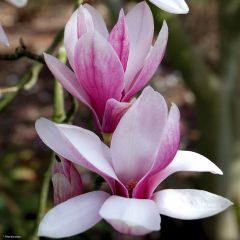
Magnolia x soulangeana
- Flowering time May, June
- Height at maturity 6 m
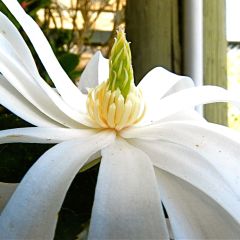
Magnolia stellata Royal Star
- Flowering time April, May
- Height at maturity 4 m
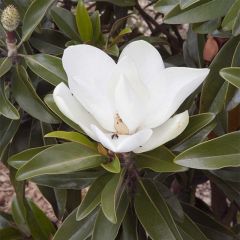
Magnolia grandiflora Alta Tmgh
- Flowering time July to October
- Height at maturity 6,50 m
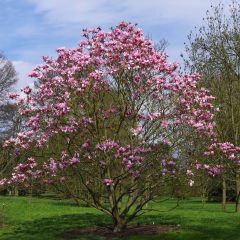
Magnolia Star Wars
- Flowering time April to June
- Height at maturity 3 m
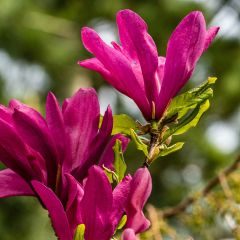
Magnolia Susan
- Flowering time May, June
- Height at maturity 3,50 m
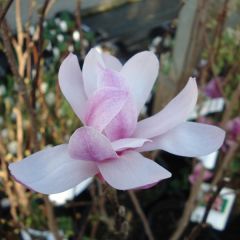
Magnolia x loebneri Leonard Messel
- Flowering time April, May
- Height at maturity 2,50 m
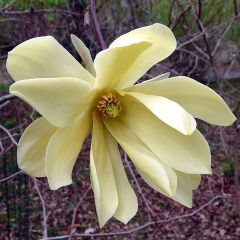
Magnolia stellata Gold Star
- Flowering time May, June
- Height at maturity 3,50 m
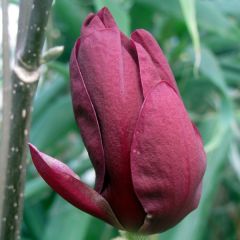
Magnolia Genie
- Flowering time May, June
- Height at maturity 3 m
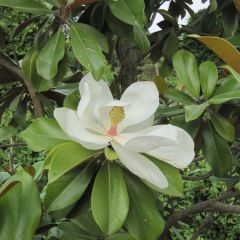
Magnolia grandiflora Galissonière
- Flowering time July to October
- Height at maturity 10 m
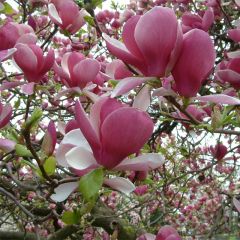
Magnolia soulangeana Rustica Rubra
- Flowering time April, May
- Height at maturity 4,50 m
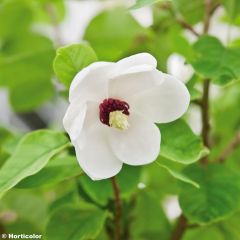
Magnolia sieboldii
- Flowering time June to August
- Height at maturity 5 m
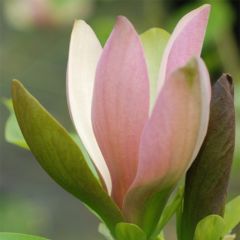
Magnolia brooklynensis Evamaria
- Flowering time June, July
- Height at maturity 3 m

Magnolia denudata Double Diamond
- Flowering time April, May
- Height at maturity 10 m
Discover other Magnolia
Planting
Where to Plant a Magnolia?
While magnolias can adapt to all regions, even cold ones, and most exhibit good hardiness down to -20°C, sometimes -25°C, it is still advisable in areas with long winters or strong winds to give them a very sheltered spot. Late frosts can damage flower buds and leaves, especially in young specimens, which are more delicate.
Magnolias prefer a sunny or partially shaded position in deep soil with a neutral or slightly acidic pH, preferably moist and humus-rich, not too dry. The Kobus Magnolia and Magnolia grandiflora tolerate slightly alkaline soil. Other species dislike alkaline conditions.
Magnolias, the quintessential ornamental trees, make a striking statement in both modest-sized gardens and large parks. Additionally, their resistance to pollution makes them excellent choices for urban gardens.
Evergreen magnolias work wonders as standalone specimens in the middle of a lawn, away from the house. Deciduous magnolias, on the other hand, shine when towering over a bed of lower shrubs, such as small maples, roses, hibiscus, or prunus.
They are sometimes trained against a warm house wall (south or west-facing) to protect them from frost, particularly delicate evergreen species like those from the Michelia and Manglietia genera, such as the Magnolia ‘Fairy White’. Alternatively, they can be grown in large containers on a terrace and moved to a cold greenhouse in winter, depending on the climate.
While deciduous magnolias are stunning in spring, bear in mind that after flowering, they revert to a rather unremarkable appearance. Plant them alongside companion plants and shrubs that will take over the display. They dislike being transplanted, so carefully consider their location before planting.
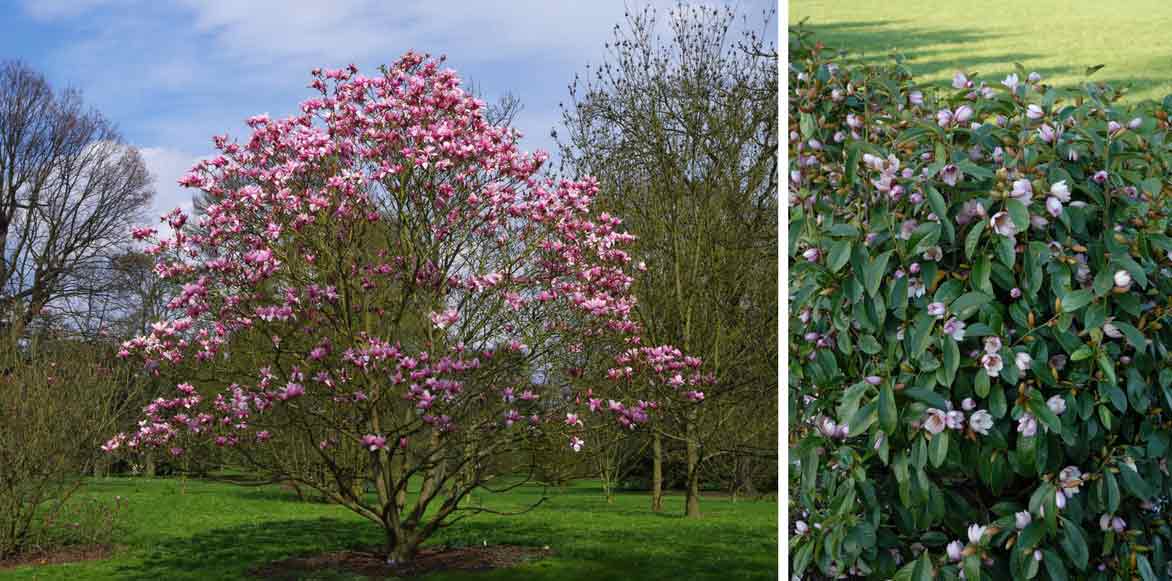
Magnolia ‘Star Wars’ Magnolia ‘Fairy Blush’
When to Plant?
The ideal time to plant a magnolia is in spring, March–April, in colder regions, or in early autumn (October) elsewhere, to encourage root establishment before winter. However, planting can be done from March to May and September to November, avoiding frost periods at all costs.
How to Plant?
Magnolias prefer non-alkaline soil enriched with peat. Most thrive in neutral to slightly acidic soil (pH 6–7), moist and humus-rich.
The soil can be slightly damp, provided water does not stagnate. In alkaline soil, be sure to add ericaceous compost.
Plant them in a wide hole, broader than deep (80 cm x 60 cm), with a mix of half original soil, half ericaceous compost, and plenty of well-rotted organic matter. Gently tease out the fragile roots when removing from the pot. Space them at least 1.5 m from other plants, or 5–6 m if planting multiple magnolias.
Plant at the same depth as the root ball, avoiding burying it too deeply. Keep the tree upright and stake it. Firm the soil lightly. Water thoroughly with non-alkaline water (rainwater). Water during hot spells. Mulch the base to retain moisture in summer and protect roots from winter cold; pine bark mulch will provide the necessary acidity. Once established, avoid moving them, as their delicate roots dislike transplanting.
For a full guide on planting magnolias, check out our practical guide: “Magnolia: Planting in 4 Easy Steps”
Maintenance, Pruning and Care
Magnolias require very little maintenance. In summer, monitor water needs, especially for young trees in their first year after planting (once a week), and water generously during dry spells—the soil should never dry out completely.
Once a year, in spring or summer, if growth appears weak, enrich the soil with an organic fertiliser such as crushed horn. In autumn, during the first few years, apply a thick layer of organic mulch (4-5 cm of pine bark, manure, or leaves) before winter to protect them from the cold, and again in March, particularly on dry soils. If late frosts threaten buds, cover the plants with winter fleece.
Since magnolias naturally develop a harmonious shape, regular pruning is rarely necessary. However, if you wish to maintain an attractive silhouette, after flowering or in autumn, carry out light maintenance pruning only to balance the framework or remove crossing branches.
During the first 3 to 4 years after planting, young shrubs may benefit from formative pruning to shape their structure. For a complete guide to pruning magnolias, follow our advice: “Magnolias: When and How to Prune?”
Pests and potential diseases
When grown in suitable conditions, magnolias are hardy and show little susceptibility to most diseases as well as insect or pest attacks. Their notorious enemies are snails and slugs that devour young plants in spring (spread slug pellets) and scale insects.
In waterlogged and poorly drained soil, they will be threatened by diseases caused by devastating fungi such as root rot, coral spot disease, recognisable by its small orange pustules (coral spot disease, how to avoid it?) and Pestalozzia, which lead to dieback or even complete defoliation of the tree. Well-drained soil regularly amended with a ‘heathland soil’ fertiliser will help prevent the fungus from appearing.
Excessively chalky soil makes the tree vulnerable to diseases, particularly chlorosis, which causes yellowing leaves and eventually the decline of the tree.
→ Learn more about magnolia diseases and pests in our advice sheet!
Propagation
While magnolias can be propagated by seed, layering or grafting, the simplest method is to take semi-hardwood cuttings. However, be aware that magnolias are among the most difficult shrubs to propagate, with results often being slow and disappointing, and establishment taking several years.
Semi-hardwood cuttings
- Carry out between mid-July and late August
- Using secateurs, take cuttings just below a node, 15-20 cm long from this year’s growth where the base is semi-ripened, meaning harder and woody
- Remove the lower leaves and the soft tip of the shoot so the cutting is 5-10 cm long
- Plant the cuttings in a tray spaced 10 cm apart or in pots, using a mix of river sand and potting compost
- Place under a cold frame or cloche in shade
- Keep the growing medium moist until rooting occurs
- Establishment is slow and may take several years
- Once well rooted, carefully separate the cuttings and repot individually in compost-filled pots
- Protect from frost in winter and transplant the following autumn or spring
Pairing
Magnolias are the stars of any garden, bringing light and contrast with their profusion of delicate flowers in spring and summer. Whether elegant or sophisticated, they make a striking focal point in a lawn, tower over lower shrubs in a border, or blend seamlessly into a hedge. They easily adapt to any setting, from modest-sized gardens to grand parks. Highly resistant to pollution, they are perfect for urban gardens.
In spring, simply surround them with an early-season carpet of flowers and bulbs—lungworts, white or cream narcissi, erythroniums, primroses, or early and botanical tulips like ‘Bastogne Parrot’ or ‘David Teniers’.
While deciduous magnolias are stunning in spring, after flowering, they take on a rather unremarkable appearance, so be sure to plant them thoughtfully! Their summer foliage limits light at their base, so choose shade-loving perennials like Omphalodes, bleeding hearts, or foxgloves to accompany them.
They pair beautifully with other spring-flowering shrubs—forsythias, lilacs, flowering cherries, Japanese quinces, ornamental apples, and flowering currants—as well as acid-loving plants like camellias, deciduous azaleas, rhododendrons, hydrangeas, or tree peonies, which will extend the flowering season in the border.
They also shine in Japanese-inspired gardens, alongside sacred bamboo, azaleas, or Japanese maples.
With blooms in shades of purple, white, pink, burgundy, or even yellow, they create fresh, charming scenes. Some can be trained against a sheltered, sunny wall to protect them from frost.
Their flowering is spectacular at the heart of a shrub border, surrounded by hibiscus, roses, viburnums, flowering dogwoods, quinces, forsythias, or flowering cherries.
Summer-flowering magnolias pair well with buddleias, shrubby cinquefoils, or, later in the season, a Katsura tree (Cercidiphyllum japonicum) or Persian ironwood, which will enhance their autumn foliage.
They also make stunning flowering hedges, whether planted alone, grouped along a path, or at the back of a border, alongside viburnums, weigelas, or mixed cultivars (Magnolia grandiflora, Magnolia denudata, Magnolia soulangeana, etc.).
Slow-growing, medium-sized magnolias like M. stellata can also be grown in pots.
→ Also check out our guide: Magnolias: 7 Planting Ideas
Useful resources
- The most beautiful magnolia collection is on our website
- Discover the Parc floral de la Beaujoire, home to the national reference collection of magnolias
- Advice sheet: What is the best place to plant a magnolia?
- Advice sheet: Magnolia: choosing the right variety for your garden
- Advice sheet: 10 evergreen magnolias
- Advice sheets: 10 pink-flowered magnolias; 7 yellow-flowered magnolias; White-flowered magnolias; 7 fragrant-flowering magnolias
- Advice sheet: Magnolias: 7 planting companion ideas
- Advice sheets: 5 star-shaped magnolia flowers; 5 large-flowered magnolias;
- Advice sheets: 5 summer-flowering magnolias, 5 spring-flowering magnolias
- Advice sheets: Growing a magnolia in a pot, 7 pot-grown magnolias, perfect for small spaces, 7 magnolias for small gardens and 7 majestic magnolias for large gardens
- To learn about its journey and history, read our article on “travelling plants: the magnolia”
Frequently asked questions
-
My magnolia isn't flowering, why?
Some magnolias take several years to flower well. This is most likely due to soil conditions. The secret to beautiful magnolias is a rich, deep and moist soil. Magnolias prefer slightly acidic soil. Some magnolia species tolerate pH levels above 7 but dislike chalky soils. Maritime pine bark will provide the acidity magnolias need while helping retain moisture at their base. To acidify the soil, spread a mixture of compost, ericaceous compost and leaf mould around the base. In spring, apply fertiliser for acid-loving plants and a good quality leaf mould. During summer, remain vigilant and water once a week, never allowing the soil to dry out completely between waterings.
-
The leaves on my magnolia are discolouring, is this serious?
Most magnolias dislike lime. In overly chalky soil, they become more susceptible to diseases, particularly chlorosis which causes leaf yellowing and eventually the tree's decline. Ensure proper planting with generous additions of peat and leaf mould.
- Subscribe!
- Contents
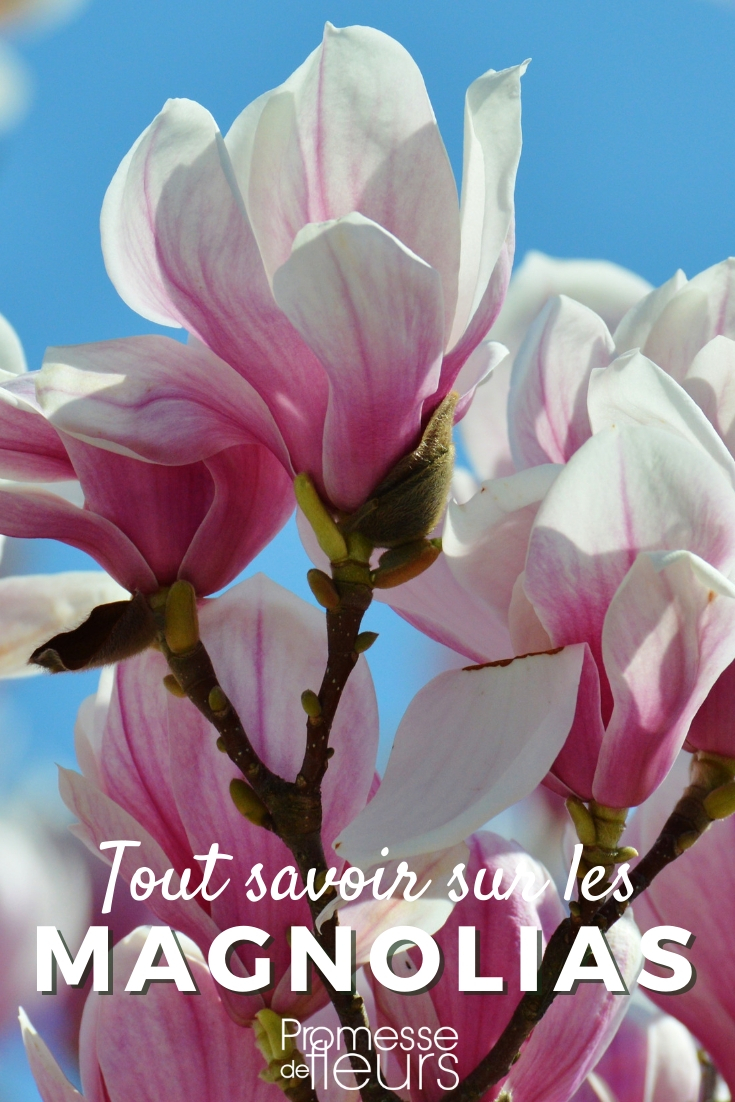


































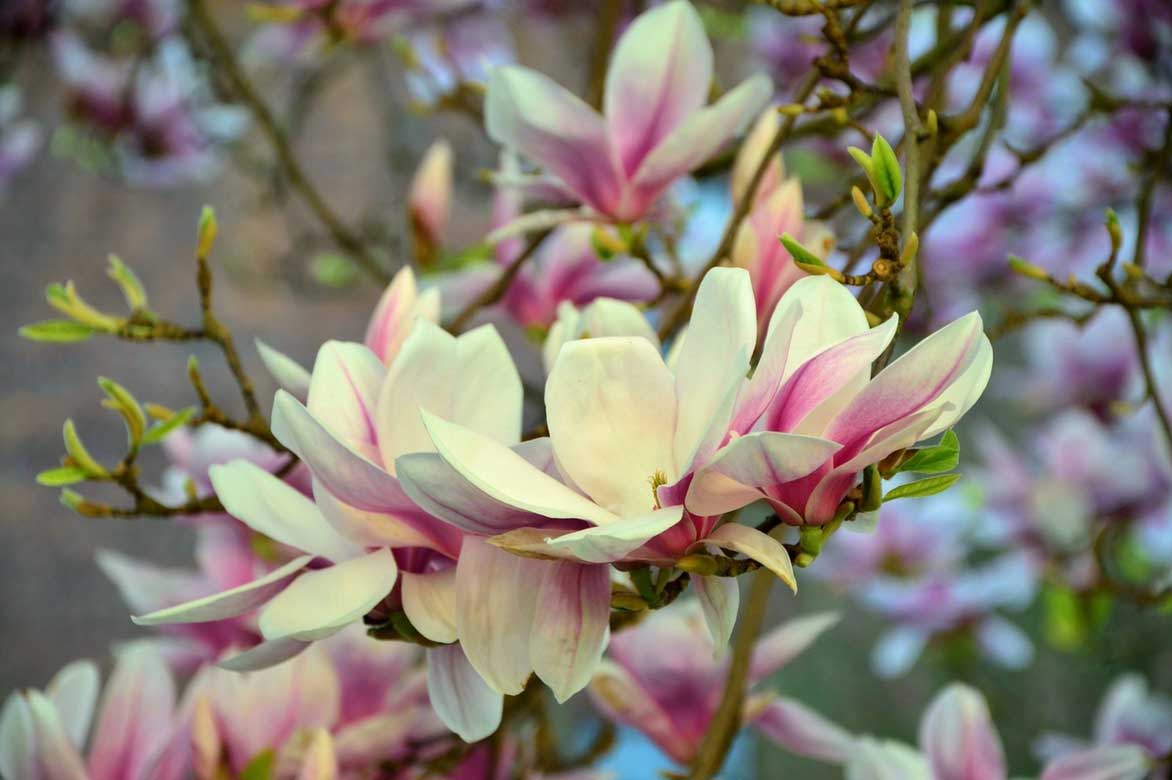
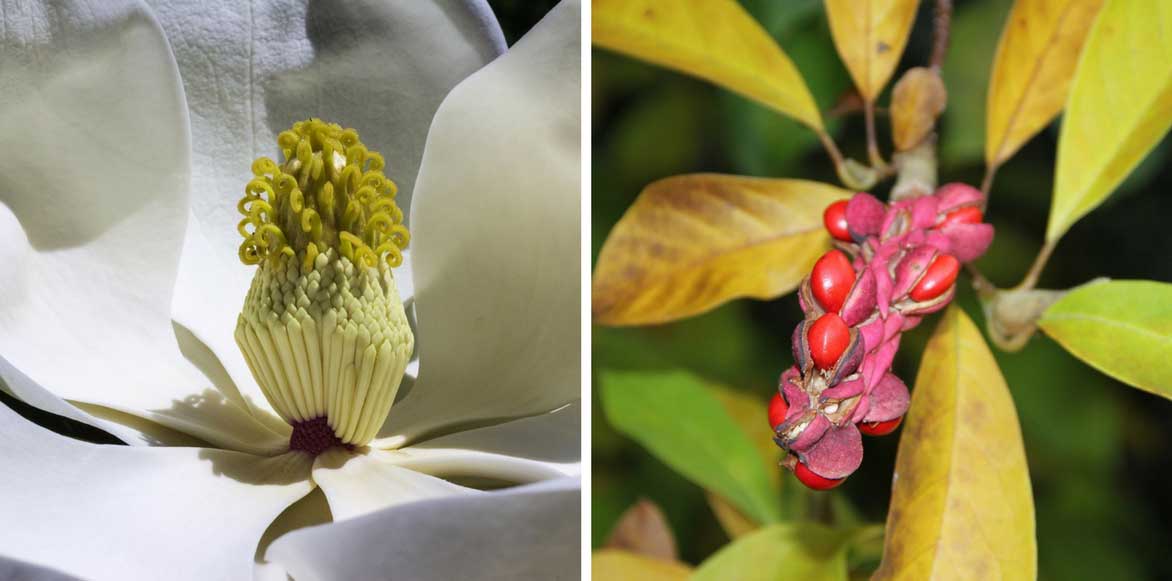
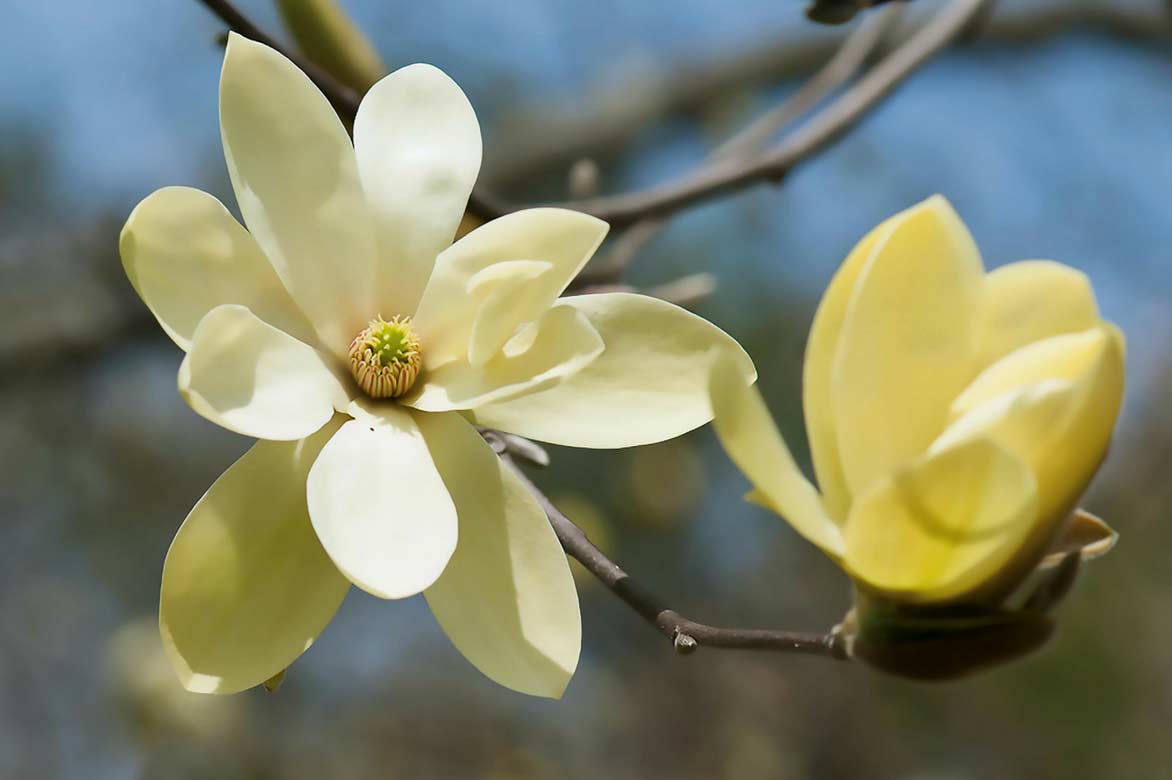
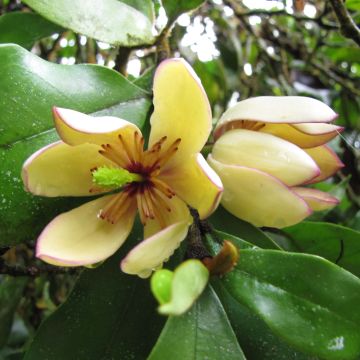

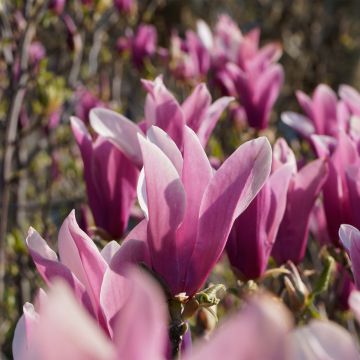
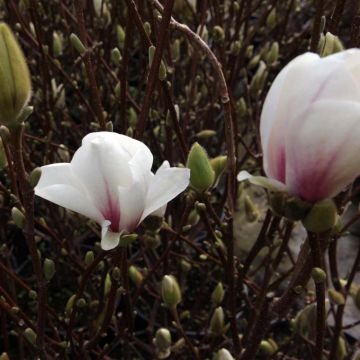

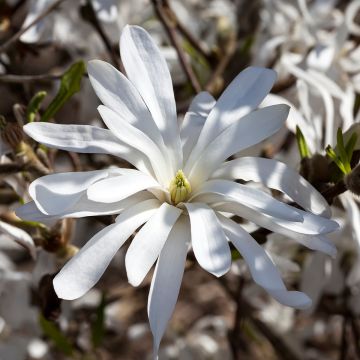



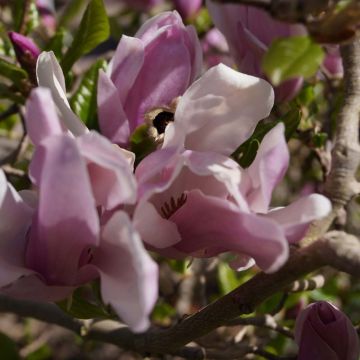
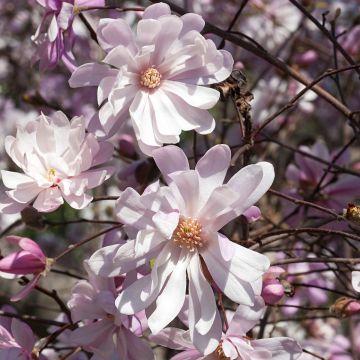

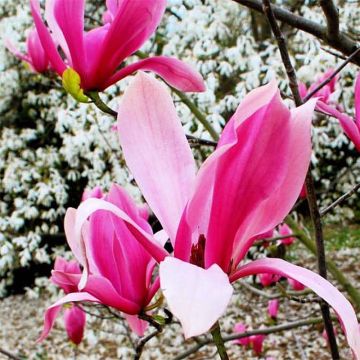
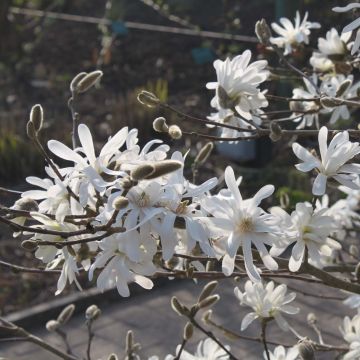
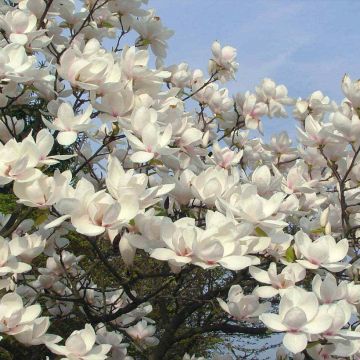
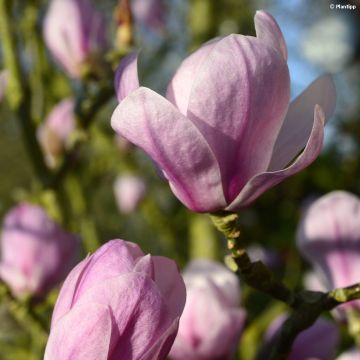
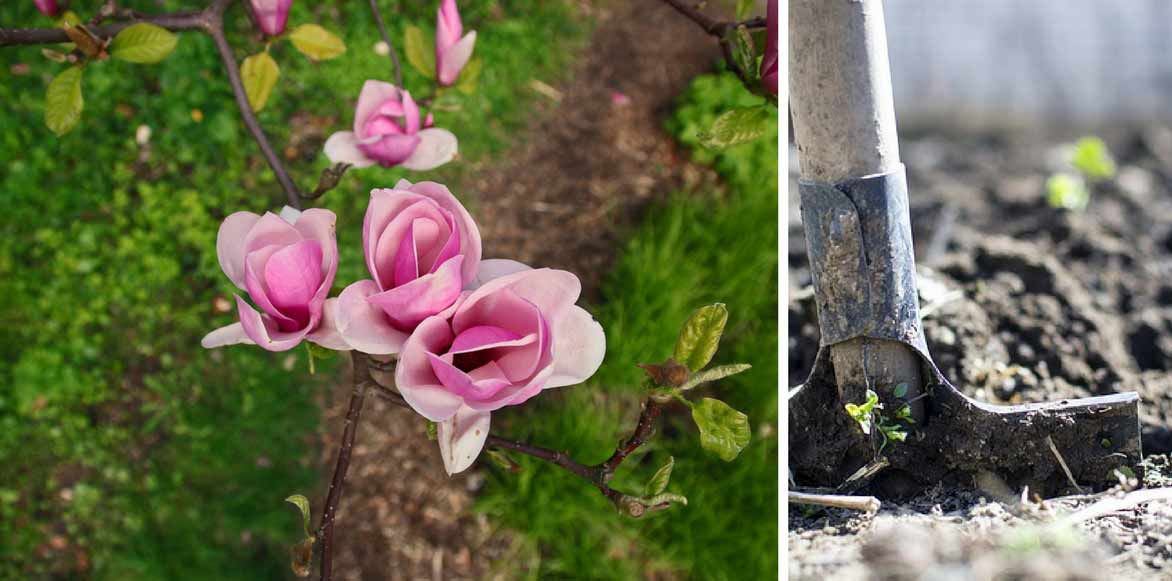
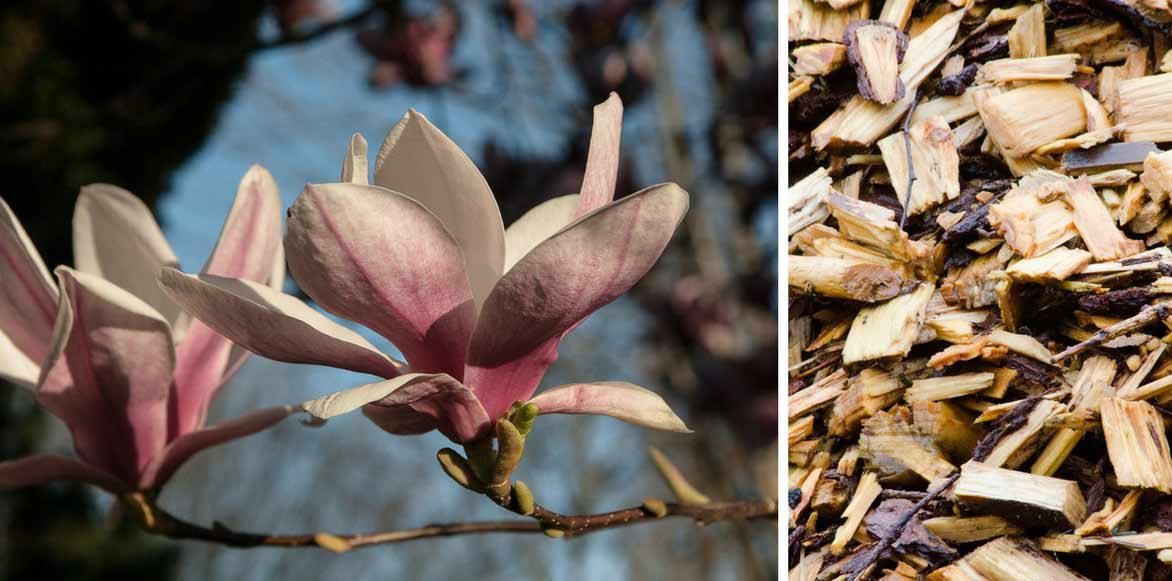
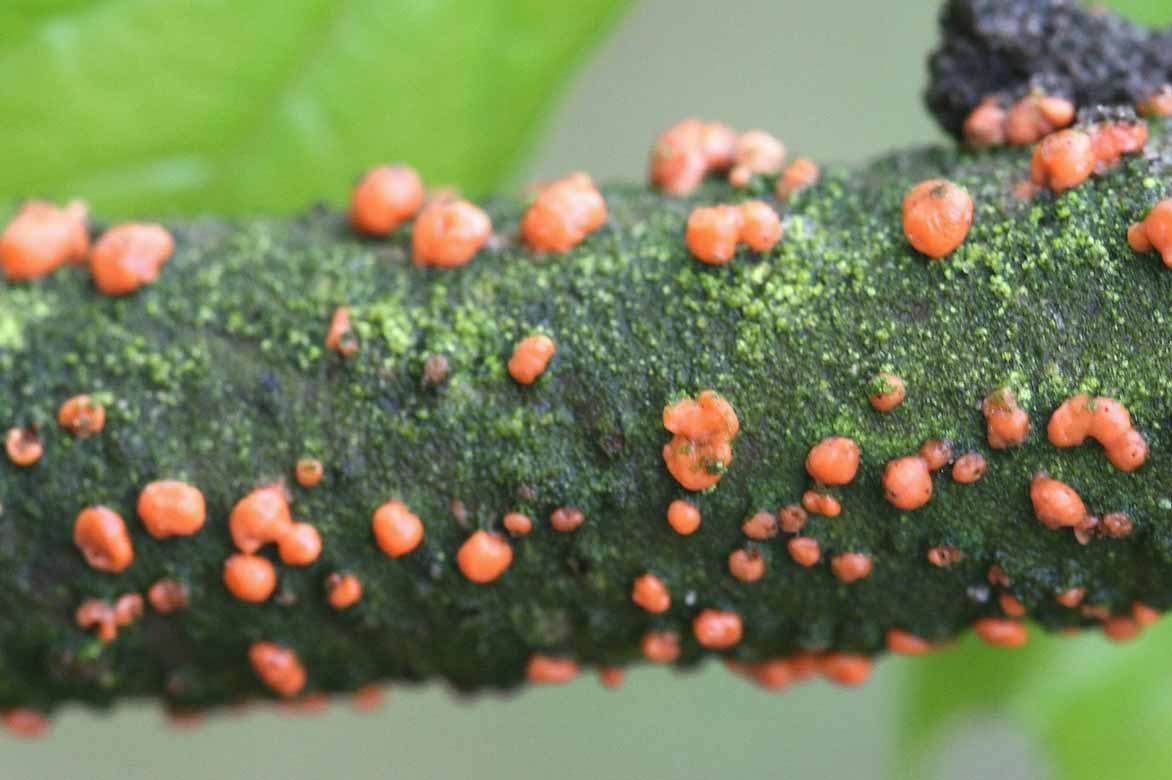
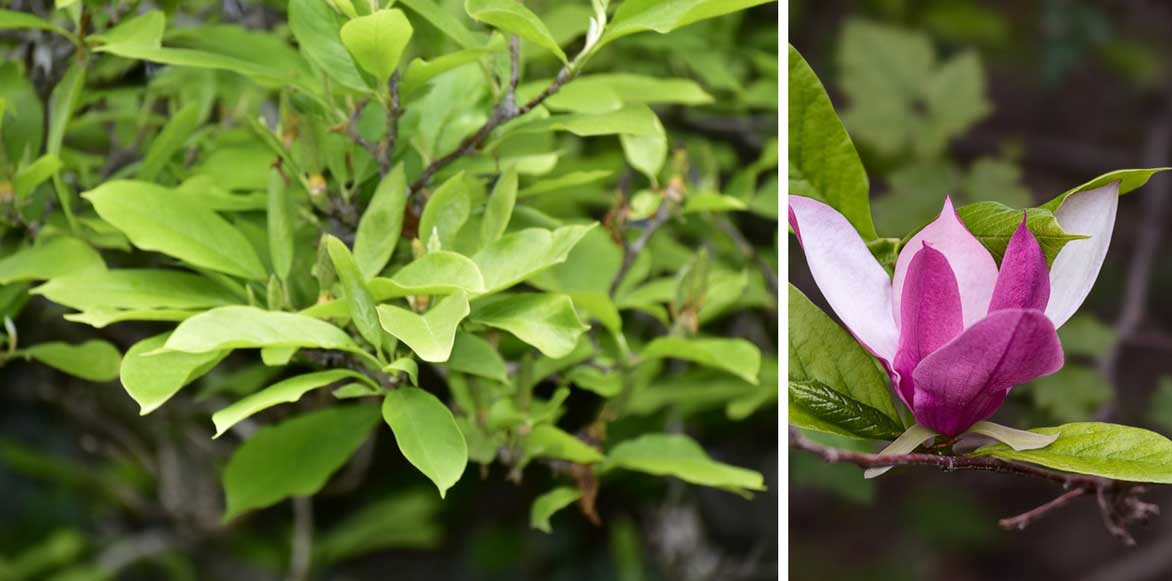
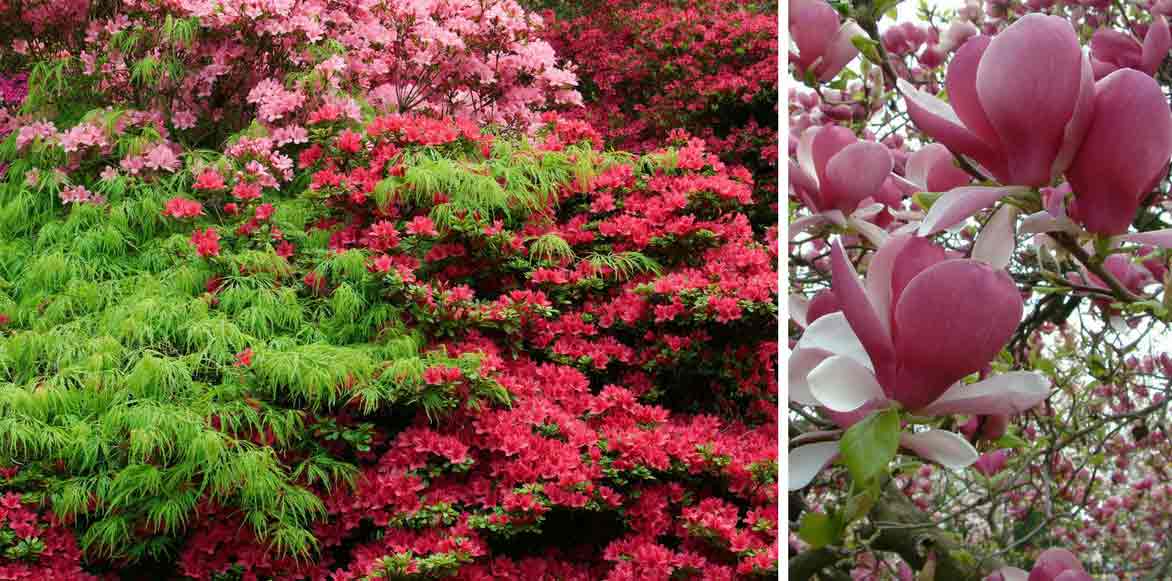
Comments